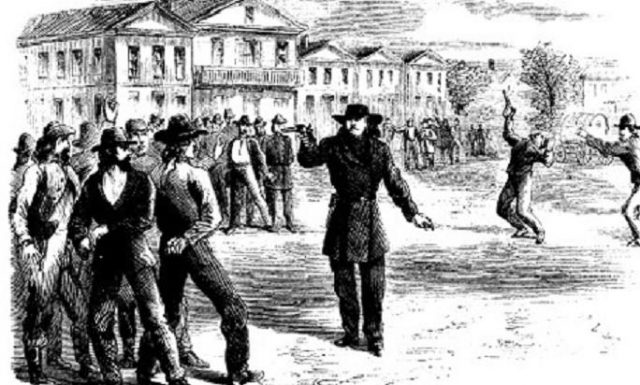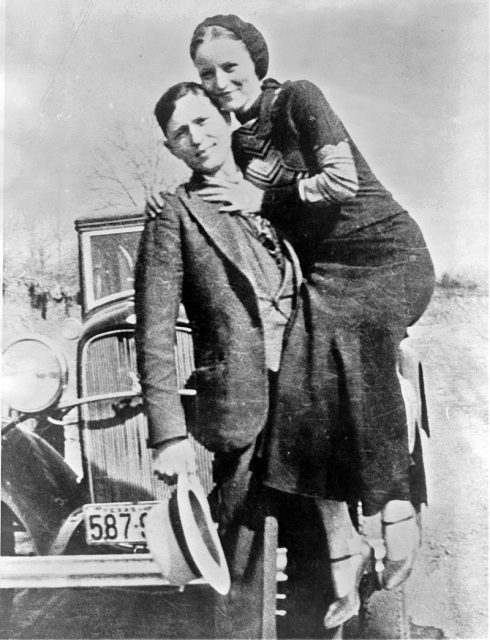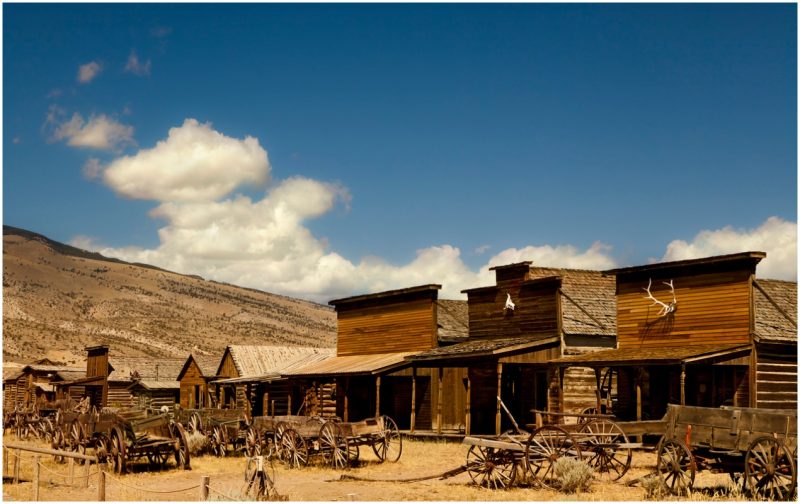“You see, in this world, there’s two kinds of people, my friend–those with loaded guns, and those who dig. You dig.” – Blondie (Clint Eastwood), in The Good, the Bad, and the Ugly, 1966
Ah, the Wild West, the good old romanticized period in American history, the “splendid” life lived on the west side of the Mississippi River, where gun-slinging was the way to settle an argument and robbing a bank was as easy as one, two, three.
Or was it?
Just as there are two kinds of people, there are two kinds of stories. Those shown onscreen or scribbled down onto pages by writers of imaginative fiction, and the factual ones based on historical records. And the latter show us that, in contrast to what we were made to believe by the Western movie genre, there were very few robberies recorded during those 40 years of wildness in Western frontier cities.

There has been much debate over the last couple of decades over whether the West was actually wild during the second half of the 19th century, as the American frontier pushed forward after the Gold Rush of 1846. A growing number of scholars argue that it was “all quiet on the Western Front,” and the state of lawlessness and death rates in frontier cities such as Tombstone in Arizona, Dodge City in Kansas, and Deadwood in South Dakota were blown out of proportion. Did the threat of constant violence fill the air as fearless outlaws roamed the wastelands under the scorching sun?
Whether violence was prevalent to such an extent is uncertain; however, almost every historian agrees that bank heists were without doubt not so common back then. On the contrary, they were so rare that they attracted a great deal of attention and grew to be legendary, and that is how they inspired a whole new fiction genre.
For instance, Larry Earl Schweikart, an esteemed American historian and professor of history at the University of Dayton, Ohio, conducted a thorough on-site research with his wife through 15 states west of the Missouri/Minnesota/Texas line: Arizona, California, Colorado, North Dakota, South Dakota, Idaho, Kansas, Nebraska, Nevada, New Mexico, Oklahoma, Oregon, Utah, Washington, and Wyoming. They concluded that only a “handful of robberies“ took place in the space between 1859 and 1900, as Schweikart reports in his article “The Non-Existent Frontier Bank Robbery.”
Moreover, he concludes, quite shockingly, that”there are more bank robberies in modern-day Dayton, Ohio, in a year than there were in the entire Old West in a decade, perhaps in the entire frontier period!”
The first thing to know is that most of the inhabitants of these towns were settlers and prospectors. Towns were small, and buildings were cramped right next to each other. Meaning that a bank, if the town even had one, was very near the sheriff’s office.
Second, banks were usually small and local, privately owned, and a “middle structure.” Meaning other people’s money was always tightened up between two other buildings, which gives criminal only two ways of robbing it. From the front, just as in those movie scenes we are used to seeing, like in 1969’s Butch Cassidy and the Sundance Kid, or blast through the rear of the bank, which was more often than not double-reinforced for obvious reasons.
And lastly, there was the escape plan. That not so glorious task of how to do it all and escape alive.
Let’s say someone found the gall to walk through the front door as Butch did, or found a cunning way to blast through the rear wall during the night. Just for a second, we will get back to number one, people being prospectors, settlers, and all that. Would a man with “Gold! Gold! Gold from the American River!“ on his mind be unarmed?
Of course not. Almost everyone living and breathing in towns back then was armed and ready to shoot anyone who would dare stick a hand in their pockets. There were no bank insurances back in the Wild West, so if someone robbed you of your savings, your money was gone. That said, as soon as the word was out that a robbery was taking place in their town, it is safe to say that practically the entire town was out and running to shoot those dirty scoundrels.

Logic aside, horses heat up 10 times faster than people and are more susceptible to the harmful consequences of heat stress. And while Bonnie and Clyde were more than able to strike quickly and escape in their 1934 Ford Deluxe during their heist era, it was not so easy to ride a four-legged mustang for a long escape back in the 19th century. “It only takes 17 minutes of moderate intensity exercise in hot, humid weather to raise a horse’s temperature to dangerous levels,” explains professor Michael Lindinger, an animal and exercise physiologist at the University of Guelph Horses.
To sum it all up, horses are at least drowsy and at worst completely useless in extreme heat and long runs. So as an answer to George Carlin’s famous question that troubled him when he was a boy, “if a guy got killed in a Western movie I always wondered who got his horse,” if it were a hot, sunny day, as it often was on screen in Western movies, the horse sadly got shot, and many times in movies they were, if the producers wished to highlight how hot it was during a particular scene.
So let’s say all outlaws were former horse breeders just like Butch Cassidy and knew everything about horses. Were they all crazy enough walk into a town and attempt to rob the bank knowing that “dying ain’t much of a living” (Josey Wales, again Clint Eastwood), and grave digging is not much of a profession if the grave you dig is your own. It is hard to say, but history tells us only a few could pull that off, and probably this is why the Wild Bunch enjoyed success, because of inventive and meticulously drawn up and organized escape plans.
One of the most underrated and overlooked movies of the decade and a true gem of cinema, one that Roger Deakins made shine and Nick Cave sound as no other movie before, depicts the story of The Assassination of Jesse James by the Coward Robert Ford. Directed by Andrew Dominik and with characters played by Brad Pitt and Casey Affleck, it tells the story of one of America’s most successful bank robbers and his infamous Missouri gang of outlaws who are believed to be connected to dozens of bank and train robberies.
Then again, most of them were in Kansas and Kentucky, east of the Mississippi River, and it is possible that they defied logic and common sense, or they were just crazy and lucky enough to make it happen.
